If you’ve played first-person shooter games like CS:GO or Valorant before, you know that smokes are an important part of the game.
They can be the difference between success and failure because they make it hard for the enemy to see.
But people who are in charge of smoking places should know where to put their smoke. If they don’t, they could hurt your team instead. Fog Cloud is the same way.
If you use a high-level spell slot to cast the Fog Cloud spell in D&D 5e, you can make a thick fog cover a big area. Basically, it’s like where you put the smokes in these games: you have to know where to put it.
Depending on where you put something, it could hurt either your team or your opponents. But the things that happen inside the fog are interesting in how they work.
For example, if you and your enemies are both in the fog, neither of you has a benefit nor a disadvantage when attacking the other. It’s kind of strange, and because it’s so hard to do, many people think the spell doesn’t do anything.
But you can convince yourself that Fog Cloud is worth getting with some creative thought and imagination.
Read this Fog Cloud 5e guide if you don’t know how to use it.
- Spell Description
- Fog Cloud 5e Stats
- How to Use Fog Cloud in D&D 5e
- How Does Fog Cloud Work in D&D 5e?
- Who Can Cast Fog Cloud in D&D 5e?
- Classes that Can Cast Fog Cloud in D&D 5e
- Subclasses that Can Cast Fog Cloud in D&D 5e
- Races that Can Cast Fog Cloud in D&D 5e
- Creative and Useful Ways to Use Fog Cloud in D&D 5e
- Covering Up Traps Using Fog Cloud in D&D 5e
- Disabling Sight-Based Spells and Abilities Using Fog Cloud in D&D 5e
- Disabling Opportunity Attacks Using Fog Cloud in D&D 5e
- Disabling Truesight Using Fog Cloud in D&D 5e
- Negating Enemy Advantages and Ally Disadvantages Using Fog Cloud in D&D 5e
- Extending a Ranged Weapon’s Reach Using Fog Cloud in D&D 5e
- Allowing Small Creatures to Use Heavy Weapons Using Fog Cloud in D&D 5e
- Creating a Hiding Spot Instantly Using Fog Cloud in D&D 5e
- Is Fog Cloud a Good Spell in D&D 5e?
- FAQs
Spell Description
You make a fog disk with a 20-foot radius that is centered on a point in range.
The sphere goes around corners and is very hard to see in its area. It lasts as long as the spell does or until a wind with a speed of at least 10 miles per hour blows it away.
If you use a spell slot of level 2 or higher to cast this spell, the fog spreads out 20 feet for every slot level above 1st.
Fog Cloud 5e Stats
- Range: 120 feet
- Components: V, S
- Duration: Up to 1 hour
- Concentration: true
- Casting Time: 1 action
- Level: 1
- Area of Effect: 20, sphere
- School: Conjuration
- Classes: Druid, Ranger, Sorcerer, Wizard
- Subclasses: Lore
How to Use Fog Cloud in D&D 5e
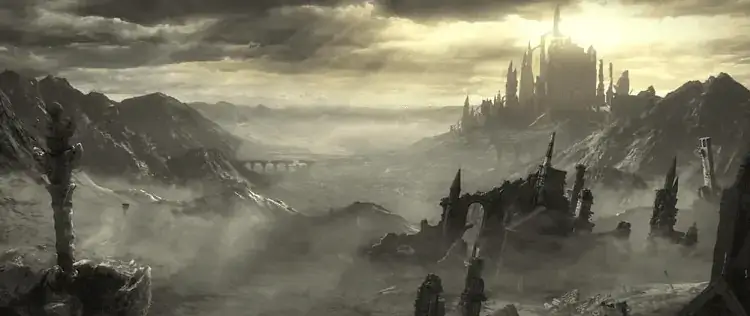
Before they can use the Fog Cloud spell, spellcasters have to meet a few conditions. I’ve talked about the standard requirements in other pieces, so if you want a more in-depth explanation, you should read those first.
I think you should read my Call Lightning 5e Guide in particular because this spell and the Fog Cloud spell are, with a few exceptions, almost the same.
Both are conjuration spells, but they have different levels. Fog Cloud is a level one spell that needs at least a level one spell slot, while Call Lightning is a level three spell that needs at least a level three spell slot.
But both spells can work better if they use a spell spot of a higher level. Call Lightning only lasts for 10 minutes, while Fog Cloud can last for up to an hour.
Both spells take one action to cast, have a range of 120 feet, and have both speaking and physical parts. Both skills also need you to focus.
If you want a full explanation of how concentration works, I put it in the Call Lightning 5e Guide in an analytical way. You can’t really cast other spells that also need focus. You also can’t get hurt or lose control of yourself.
After you’re sure you’ve met the standards for Fog Cloud, it’s time to cast it.
When you do:
- Choose a spot in the middle where the fog spreads out in a sphere 20 feet in diameter. Using a square grid where each tile is five feet, a 20-foot radius is equal to four tiles. So, the full size of the foggy sphere is up to 40 feet, or eight tiles.
- If you use a spell slot of level two or higher, the radius of the sphere grows by 20 feet for every level above one. For example, if you use a level three spell slot to cast Fog Cloud, it will have a radius of 60 feet because there are two levels above one, which adds 40 feet to the main radius.
In the next part, we’ll talk about what happens when the Fog Cloud is in place.
How Does Fog Cloud Work in D&D 5e?
From the spot you choose, a thick fog spreads out, making it hard to see where the smoke is. Anyone who tries to look through the site gets the “Blinded” state, which makes the following things happen:
- A critter that tries to look through the area won’t be able to see anything. So, magic that can only work if the caster can see the target always fail.
- If a thing tries to see through the area, it automatically fails a check that needs it to be able to see. For example, someone who tries to do an Investigation check on a mechanical device that is inside the Fog Cloud automatically fails.
- When attacking, a creature that is in the Fog Cloud has both a benefit and a disadvantage. The first advantage the thing has is that its target is blind. But the creature also has a problem because it can’t see. So, the two things cancel each other out, and the enemy just makes an attack roll as usual.
- When striking, a creature in the Fog Cloud has both an advantage and a disadvantage on their attack rolls. In a similar way to the last time, the creature has an advantage because its target can’t see it, but it has a drawback because it can’t see its target either. As I said, the two things cancel each other out, so the enemy makes an attack roll as usual.
The Fog Cloud moves away when there is a wind of at least ten miles per hour.
The results of this spell will last as long as the person who casts it can focus on it for up to an hour. As you can see, the spell is very hard to understand, especially when it comes to the third and fourth steps.
Many players agree that the way Fog Cloud works is weird, and that’s the main reason they say it’s not a good spell. I’ll show you how it works so you can understand it better.
Who Can Cast Fog Cloud in D&D 5e?
Fog Cloud is a spell that can be used by four classes (Druid, Ranger, Sorcerer, and Wizard), four subclasses (Arcane Trickster Rogue, Eldritch Knight Fighter, Marid Genie Warlock, and Tempest Cleric), and two races (Half-elf with Mark of Storm and Triton).
Classes that Can Cast Fog Cloud in D&D 5e
This magic smoke machine can be used by Druids, Rangers, Sorcerers, and Wizards. All of these classes, except for the Ranger, have level one spell slots at level one. This means they can get the Fog Cloud spell as early as level one.
At level 2, rangers get two spell slots for level 1 spells. The sources for each class are listed below.
- Page 64 of the Player’s Handbook for Druid
- Ranger: Player’s Handbook, page 89
- Page 99 of the Sorcerer Player’s Handbook
- Page 112 of the Wizard Player’s Handbook
Subclasses that Can Cast Fog Cloud in D&D 5e
Four subclasses have access to the Fog Cloud spell; below is the crucial info for each subclass.
| Subclasses that can cast Fog Cloud | Originating Class | Subclass Source | Class Source |
| Arcane Trickster | Rogue | Player’s Handbook, page 97 | Player’s Handbook, page 94 |
| Eldritch Knight | Fighter | Player’s Handbook, page 74 | Player’s Handbook, page 70 |
| Marid Genie | Warlock | Tasha’s Cauldron of Everything, page 73 | Player’s Handbook, page 105 |
| Tempest Domain | Cleric | Player’s Handbook, page 62 | Player’s Handbook, page 56 |
Races that Can Cast Fog Cloud in D&D 5e
Fog Cloud is a spell that can be used by the Half-elf with the Mark of Storm and the Triton. If you choose the first option, keep in mind that it takes place in Eberron.
If your story isn’t centered around Eberron, the race won’t make sense. So, first ask your DM if you can choose the race. If they agree, they might write about how you got involved in the effort.
The “Spells of the Mark” race trait of the Half-elf with the Mark of Storm lets them use the “Fog Cloud” spell. You can’t use the spell, though, unless your class has a Spellcasting or Pact Magic class option.
For example, a Barbarian of the race can’t cast Fog Cloud because Barbarians can’t cast magic. In essence, this race trait adds the spell “Fog Cloud” to your list of spells.
The “Control Air and Water” race trait of the Triton lets them cast Fog Cloud. They can only use it once after a long rest, though. So, if you use this race trait to cast Fog Cloud, you can cast it again after a long rest.
On page 50 of the book Eberron: Rising from the Last War, you can read more about the Half-elf with the Mark of Storm. On page 115 of Volo’s Guide to Monsters, you can read more about the Triton.
Creative and Useful Ways to Use Fog Cloud in D&D 5e
On the surface, the Fog Cloud spell seems kind of useless. It doesn’t help you or hurt the other team.
What does it matter?
As it turns out, its biggest flaw is also its biggest strength: no one can win or lose. With a little imagination, we can use the strength of the Fog Cloud to our advantage in the following ways:
- Covering up traps
- Disabling sight-based spells and abilities
- Disabling opportunity attacks
- Disabling Truesight
- Negating enemy advantages and ally disadvantages
- Extending a ranged weapon’s reach
- Allowing small creatures to use heavy weapons
- Creating a hiding spot instantly
Covering Up Traps Using Fog Cloud in D&D 5e
You are being chased through a cave by a pack of wolves, and you all end up in the same room. You are being chased by wolves, but you have some good traps with you. The room is empty, so you can’t hide the traps here.
Casting Fog Cloud would be a good idea, especially if the room is big. The plan is to set up the trap on the ground and then send out Fog Cloud to hide the surprise.
You might need permission from your DM to use this way to hide traps, though. The rules say that to find a trap, you can either use your passive Wisdom (Perception) score or make a Wisdom (Perception) check.
But the Perception skill isn’t just about seeing things. Instead, it depends on things like how it smells, how it sounds, how it feels, etc.
So, first ask your DM if this is a good way to hide your traps. If someone asked me this question as a DM, I would think about the trick first. If the trap doesn’t make any sounds, smells, or temperature changes, it can only be found by seeing it.
So, if we are talking about this kind of trap, I would let the Fog Cloud hide the surprise. When the dogs get in, they’ll set it off!
Disabling Sight-Based Spells and Abilities Using Fog Cloud in D&D 5e
For many spells, the person who casts it has to be able to see the object or a point in space. There are a total of 191 spells that require sight.
These spells come from Acquisitions Incorporated, Explorer’s Guide to Wildermount, Fizban’s Treasury of Dragons, Player’s Handbook, Strixhaven: A Curriculum of Chaos, Tasha’s Cauldron of Everything, and Xanathar’s Guide to Everything.
Even if you only use magic from the Player’s Handbook, 102 of them still require sight. Also, some animals have skills that require them to be able to see.
All of these spells and abilities fail when you use Fog Cloud because the person casting the magic or the animal can’t see the target. If your enemy can cast similar spells or has similar skills, casting Fog Cloud will give you an edge.
Disabling Opportunity Attacks Using Fog Cloud in D&D 5e
A lot of players and DMs forget that Opportunity Attacks are a thing, but if you don’t know what they are, I’ll tell you.
On page 195 of the Player’s Handbook, the rules say that you can use your response to attack an enemy who just moved out of your reach.
For example, if an enemy is five feet away and moves away to hit someone else, you can hit them while they are going away. These kinds of strikes are called Opportunity strikes.
But it’s important to remember that you need to see your enemy move away from you for this rule to work. So, if you cast Fog Cloud, Opportunity Attacks won’t happen, since it makes it hard to see.
Disabling opportunity strikes can be helpful, especially if you need to move but are surrounded by enemies and can’t move away from them.
Because of their Opportunity Attacks, you would take a lot of damage if, for example, six wolves surrounded you. If this happens to you, Fog Cloud can save the day.
Disabling Truesight Using Fog Cloud in D&D 5e
The Monster Manual and other books have a lot of monsters with Truesight. Truesight is a type of sense that lets animals see through normal and magical darkness, invisible beings and objects, and optical illusions.
There are 23 monsters with Truesight just in the Monster Manual. This number goes up to 113 when you add in other sources.
If a monster has Truesight, you can even the odds by casting Fog Cloud in the area. Yes, the “Blinded” state will affect you, but it will also affect the beast.
On page 183 of the Player’s Handbook, the rules for Truesight don’t say that characters with this sense can see through normal or magical fogs.
Negating Enemy Advantages and Ally Disadvantages Using Fog Cloud in D&D 5e
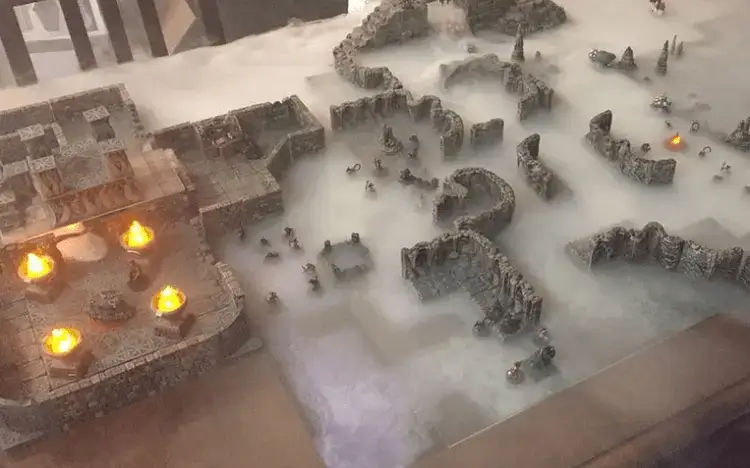
You are about to fight the final boss! This fight will decide whether the world is at war or at peace. During the battle, the boss casts spells that help him win.
He can also cast spells that make it harder for you to hit. This technical problem may seem small at first, but you’ll soon find out that these disadvantages make it a hard fight to win.
Some analytical players have found that there are at least 198 ways for enemies to give themselves an edge and give you one. Fog Cloud is a good way to cancel out an enemy’s advantage or an ally’s drawback.
Due to the “Blinded” condition, this spell breaks those rules, and having both a benefit and a disadvantage at the same time is against the rules.
For example, the enemy might use the Blur magic on themselves. Most of the time, people who try to attack the attacker will have a disadvantage when they roll their attack dice.
If you cast Fog Cloud, that disadvantage goes away, and anyone who attacks the enemy has an edge because the enemy can’t see the attacker.
So, it doesn’t matter. Even if the case calls for two bad things and one good thing, it doesn’t matter.
Extending a Ranged Weapon’s Reach Using Fog Cloud in D&D 5e
Due to the way the spell works, Fog Cloud can make a thrown weapon’s average reach longer. Let’s say that a thief attacks with a light crossbow.
The range of a light crossbow is between 80 and 320 feet, so if a bandit hits someone more than 80 feet away, he has a disadvantage on his attack roll. But because Fog Cloud cancels out both pros and cons, this problem goes away.
If the bandit is in the Fog Cloud or fighting someone who is in the Fog Cloud, he can shoot at a target up to 320 feet away without losing anything.
So, if you or someone else in your group uses ranged weapons a lot, casting Fog Cloud can make them more effective at longer ranges.
Also, using a thrown weapon against an enemy who is five feet away from you no longer hurts you. Again, if someone in your party uses ranged weapons a lot, Fog Cloud lets them target animals close to them without taking damage.
Allowing Small Creatures to Use Heavy Weapons Using Fog Cloud in D&D 5e
In the different sources, there are 40 small races and subraces, like the Gnome, Halfling, Kobold, and more. Most of the time, you can’t use a heavy weapon in this kind of game.
In D&D, the rules say that small creatures are at a disadvantage when they hit with a heavy weapon. If you’re in a tough spot and need to do more damage to your enemies, you can use Fog Cloud.
When you cast Fog Cloud, the disadvantage that small things have is taken away.
Of course, for this rule to work, the tiny creature or their target must be inside the Fog Cloud. Your Halfling Fighter can finally use a big sword!
Creating a Hiding Spot Instantly Using Fog Cloud in D&D 5e
You and your friends are once again stuck in a room with no furniture. You have to get away from a scary monster this time.
Because of what the monster can do, you have the “Frightened” state. Because of this, you can’t move closer to it on your own. The best thing to do would be to avoid it instead of fighting it, but how can you do that?
You can hide, but you can’t use anything in the room to do so. Casting Fog Cloud would be a great idea. It makes a place where you can hide that is very hard to see.
You still have to use the “Hide” move because the monster can still find you by hearing or smelling. If you have nothing else to hide in, you can always smoke.
Is Fog Cloud a Good Spell in D&D 5e?
At first, I thought that Fog Cloud was not a useful spell to learn because it doesn’t help your friends or hurt your enemies.
But after looking closely at what the spell can do, I’ve learned that it’s a great spell to have because it can cancel out both benefits and disadvantages. It can also stop attacks that come out of nowhere and spells and skills that rely on sight.
You can build around Fog Cloud to make it even stronger. Fog Cloud is a great example of a spell that works well when used to target an area without being able to see it or the targets.
If your enemies are in the smoke, you can target them with a spell like Fireball. Also, you shouldn’t use magic like Acid Splash, Frostbite, Poison Spray, and others that require you to see.
Still, the fact that this spell can cancel out both pros and cons is enough to make it a good choice. Players who thought about it found that there are about 198 ways to give or take something away from a creature.
You don’t have to worry about your team being at a loss if you have Fog Cloud. Yes, the spell only works in certain situations, but when it does, it works very well.
FAQs
Can You Dispel Fog Cloud in D&D 5e?
Yes, you can clear Fog Cloud in D&D 5e. There are many ways to get rid of it. For example, the Gust of Wind spell at level 2 will blow the fog away in a 60-foot path. With the level three Wind Wall spell, air can’t get into a certain area. With the level 8 Control Weather spell, you can make a strong wind that you can point at the Fog Cloud to blow it away. You can also stop the effects of the Fog Cloud by using the level three Dispel Magic spell.
Does Fog Cloud Block Sunlight in D&D 5e?
No, Fog Cloud does not block sunshine in D&D 5e. In 2017, someone asked D&D’s lead game architect and creator, Jeremy Crawford, if Fog Cloud blocks sunlight or other sources of light.
He said that the Fog Cloud makes it hard to see, but it doesn’t stop light from getting through. Sage Advice is the name for all of Jeremy Crawford’s explanations of the D&D rules, and everyone takes them as official.
Can Fog Cloud Move in D&D 5e?
In D&D 5e, Fog Cloud can’t move. The person who casts the spell must decide where the fog cloud will start. You can’t move the point or the Fog Cloud after you cast the spell.
If you want to release it somewhere else, you must first get rid of the current Fog Cloud, since you can’t focus on two spells that take concentration at the same time. If you want to use it twice, you will still need two different spell spots.
Can Truesight See Through Fog Cloud in D&D 5e?
No, in D&D 5e, beings with Truesight can’t see through a Fog Cloud. On page 183 of the Player’s Handbook, the rules for Truesight say that they can see through regular and magical darkness, invisible creatures and objects, and optical illusions. It doesn’t say that they can see through either normal fog or magical fog, so they can’t.

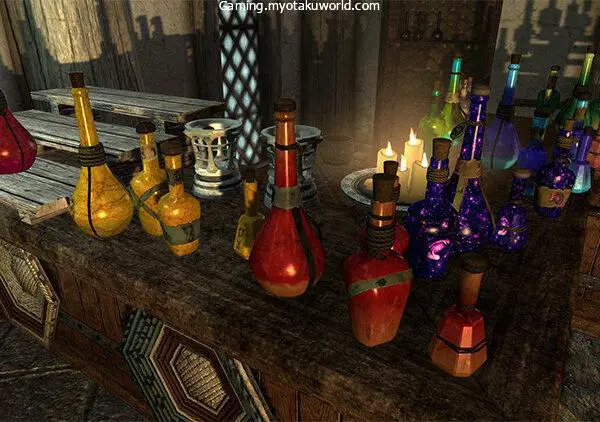

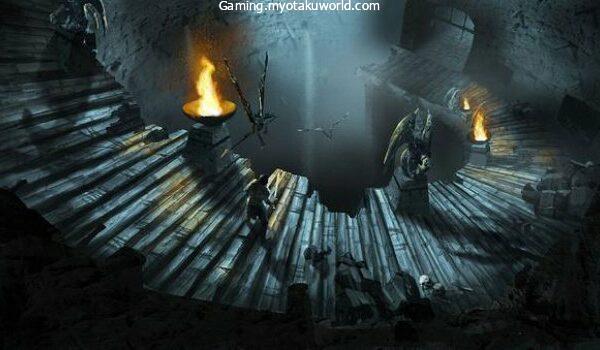
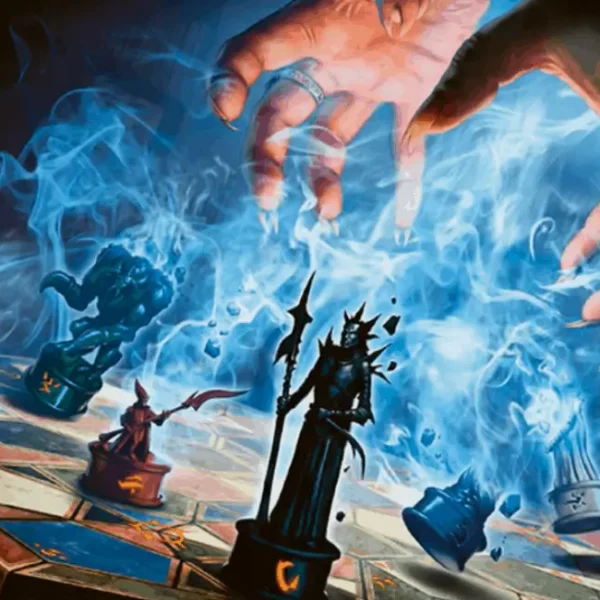
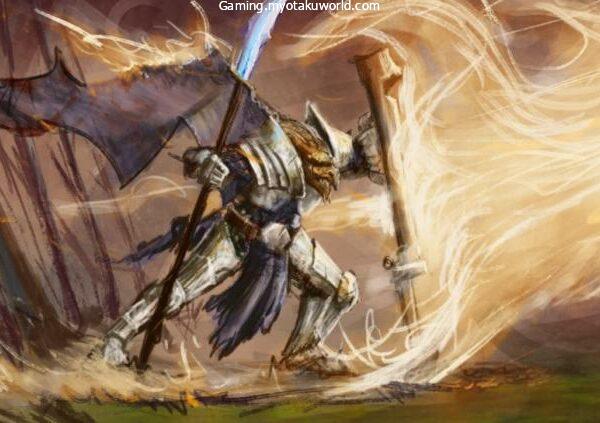


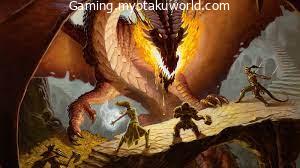
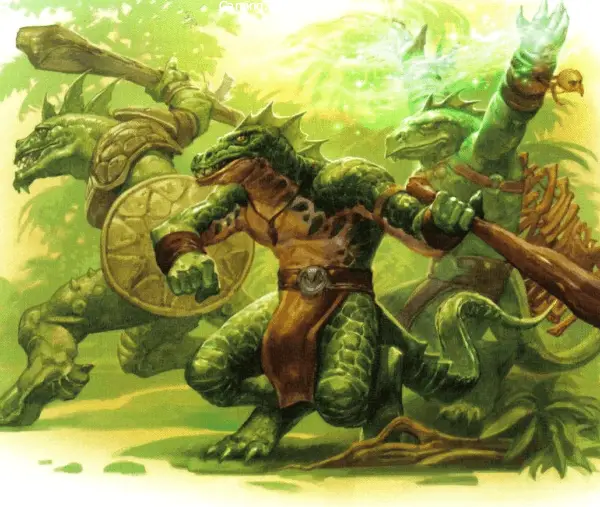
Leave a Comment